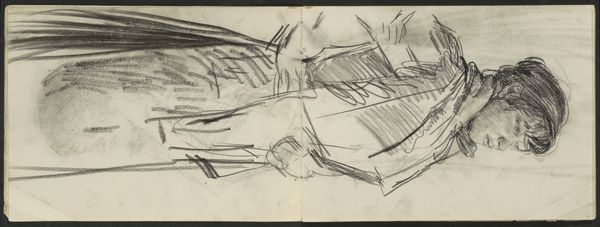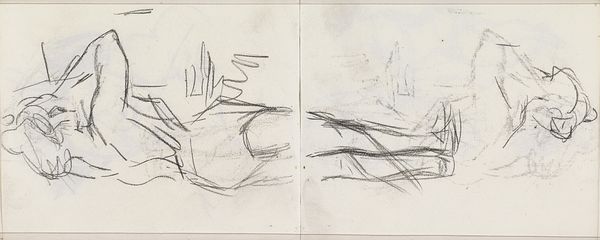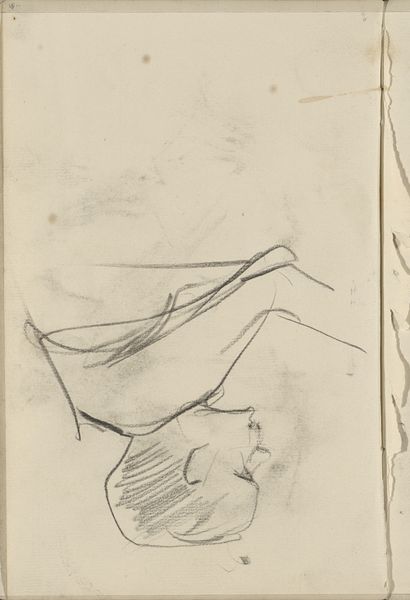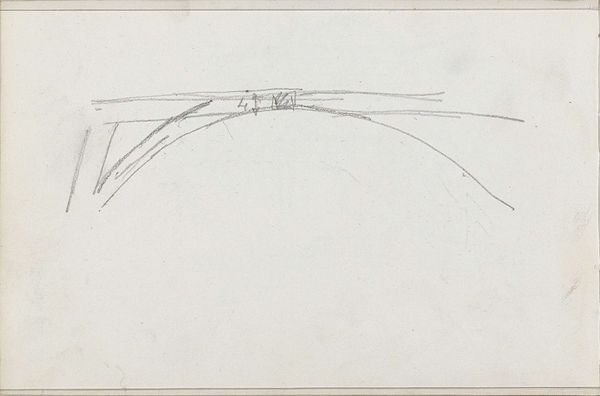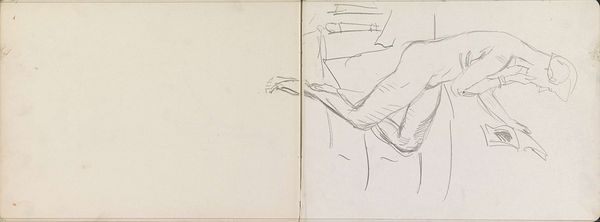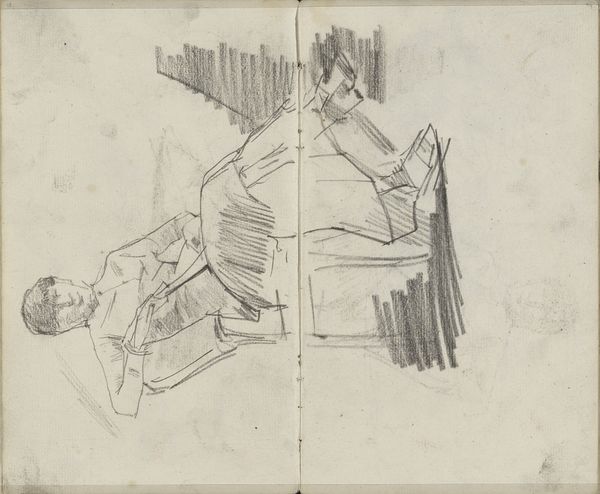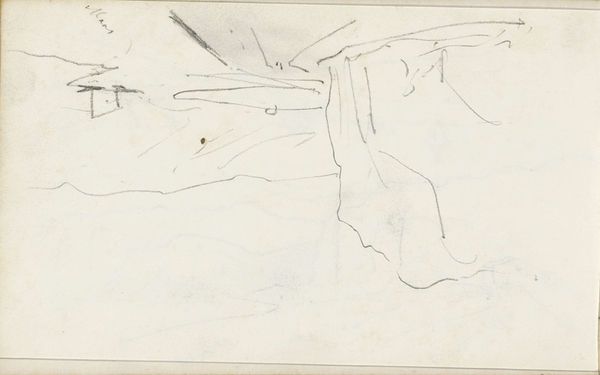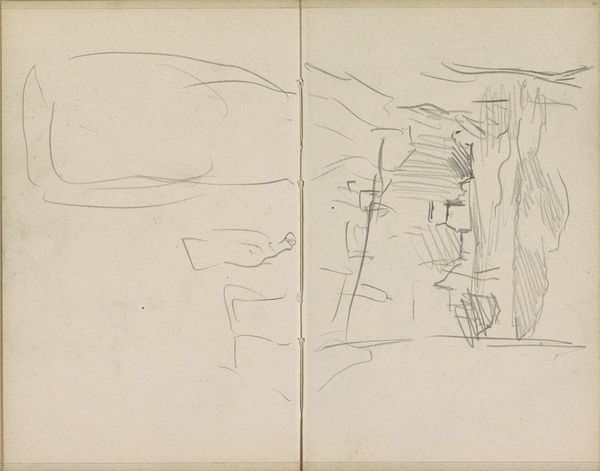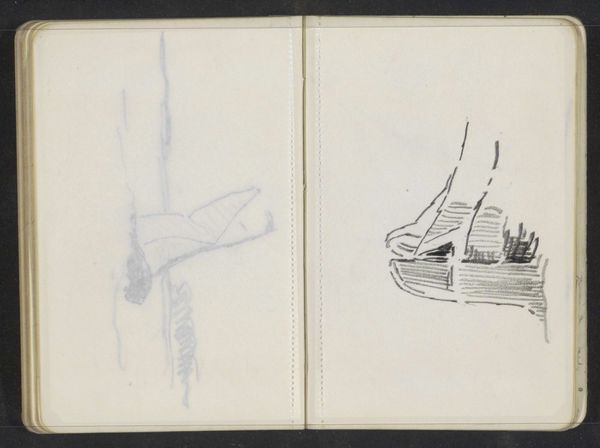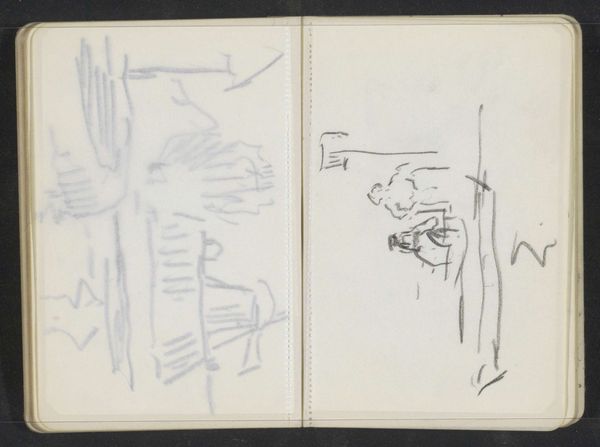
Copyright: Rijks Museum: Open Domain
Curator: Here we have "Studieblad met vrouwen," or "Study Sheet with Women," a drawing made by Isaac Israels likely between 1886 and 1903. It's currently held in the Rijksmuseum. Editor: Oh, this looks like a peek into his personal sketchbook. The pencil lines are so delicate, capturing the figures in fleeting moments. It has a sense of immediacy; almost like catching dreams on paper. Curator: Precisely. Its creation involved readily available, inexpensive materials—pencil and paper. Sketchbooks such as this served as crucial tools for artists refining their techniques and ideas. Israels was from a wealthy banking family that could afford an artistic lifestyle, a studio in Amsterdam where his materials reflected ease and excess to create. Editor: I imagine Israels, quickly sketching these women as they relaxed. Their postures tell little stories—the way they lean, almost disappear into the couch! The figures are fragmented and fluid. It's about gesture, not polished detail. Curator: That gets to the core of it. The material simplicity contrasts with the societal backdrop: The drawing exists in the world of readily accessible materials shaped by specific labor conditions within Israels's studio practice. Not as refined for gallery showings like the finished works. Editor: Right, more about capturing a mood or a fleeting expression than a polished likeness. I almost feel a strange voyeurism looking at these scribbles. These feel very personal! Curator: Sketchbooks invite us to consider the everyday aspects of artistic creation: the testing of ideas, the honing of skill through repeated observation and practice, where it became easier for middle to upper class artists to purchase art materials. Editor: Absolutely. It shifts the focus from the end product to the process— the dance between the eye, the hand, and the subject. There's beauty in that vulnerability, the rawness of the initial spark. This feels more intimate than looking at some glossy painting. Curator: Indeed. Studying this piece sheds light not only on Israels’ methods but on the broader material conditions that shape artistic practices of his time, even with the initial private work. Editor: I agree. There is a raw beauty of "Studieblad met vrouwen". It offers a momentary window into a world we can observe, that is usually left unseen by the public eye. It lets the viewers engage more directly with creation.
Comments
No comments
Be the first to comment and join the conversation on the ultimate creative platform.

